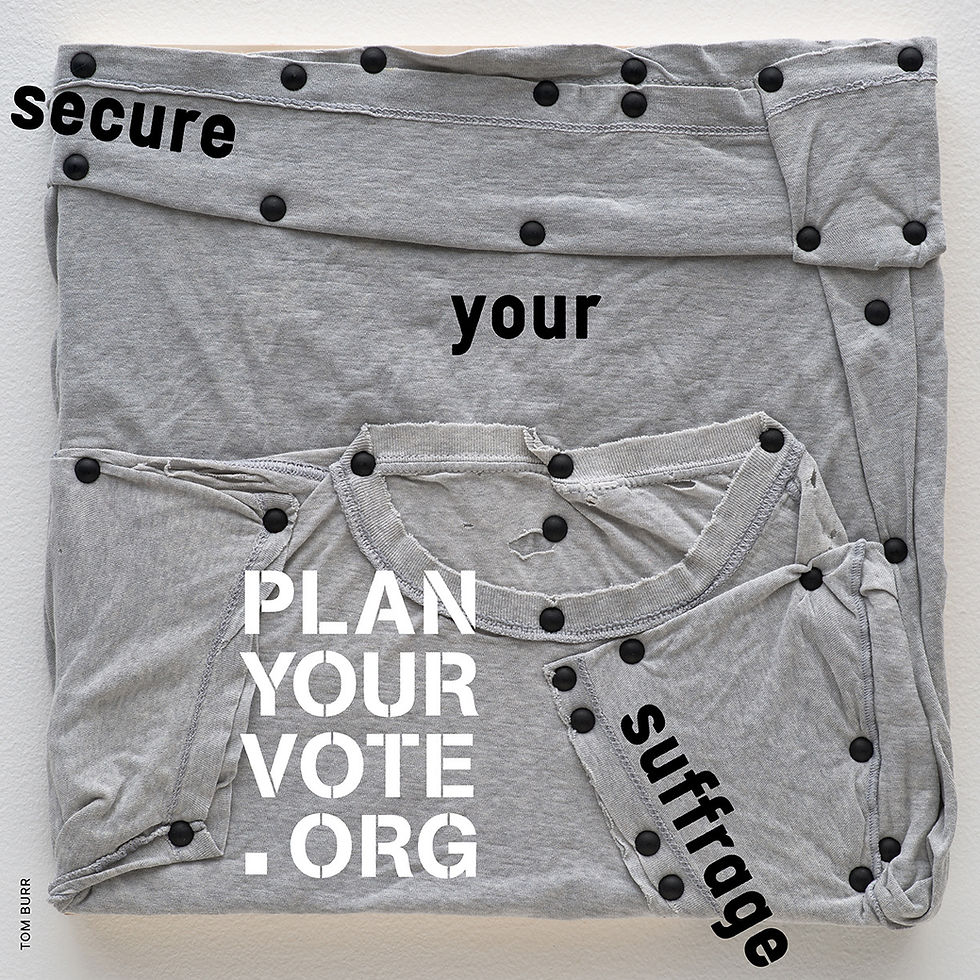What Role Did the Arts Play in the Women's Suffrage Movement?
- execdirector50
- Nov 3, 2020
- 3 min read
Updated: Oct 20, 2022
Leading up to the centennial commemoration of the ratification of the 19th Amendment, and Core Dance's tour of Nevertheless, She Persists, we asked Core Dance Intern, Julia Weisberg to reflect and research on the role of the arts in women's suffrage. Read on to learn more.

Core Dance dance artists were recently in Arkansas for a new performance piece that commemorates the 100th anniversary of women's suffrage.
And while we pay tribute to the suffragettes, did you know about the role the arts played throughout the suffrage movement?
Similar to other movements in history, art played a vital role in the fight for women’s suffrage. The specific reasons art played a vital role in the women’s suffrage movement, however, contrast with other movements. One of these reasons is due to women’s socioeconomic status at the time; Women were restricted to what jobs and careers they could hold, and art was one of the few that they could hold at the time. Many well-respected artists such as William Morris employed women in areas such as embroidery, tapestry, illustration, and more. Due to a market demand for the arts and the high unemployment rate of women at the time, art schools were encouraged to enroll women to help bring art into society. This brought a large amount of women into the workforce and brought an influx of interest to using art to promote the movement. So, unlike other movements, which were mostly led by men, women’s entrance into the art world fueled a powerful way to shift public opinion and rally support.
It is also important to note that another reason why art played a crucial role in the fight for women’s suffrage is simply due to legality. Many suffragists who attempted to vote, argue, or even speak out too harshly were often fired, looked down upon, or even jailed. While many women were passionate about obtaining equality, it was hard to put themselves in positions that could negatively affect their families, income, lives, etc.; Art was a more passive route that wouldn’t put them in as much risk as the active routes.
After understanding the degree to which art played in the women’s suffrage movement and why, it’s important to recognize the different ways women used art to promote women’s suffrage.

If Congress refuses to listen... by Meredith Davis for AIGA Get Out the Vote: Empowering the Women’s Vote
While working as artists, many women faced discrimination in relation to scholarships, travel grants, and life drawing classes. This drew women to join the movement and form different unions and groups to push the cause. The Artists’ Suffrage League (ASL) and the Suffrage Atelier (SA) were two of the biggest, and both were heavily influenced by the Arts and Crafts Movement. The ASL was founded in 1907 and began by making embroidered banners for marches and demonstrations. The importance of these banners was described by Mary Lowndes in an article for the magazine The Englishwoman; ‘It is not a placard. A banner is a thing to float in the wind, to flicker in the breeze, to flirt its colours for your pleasure, to half show and half conceal a device you long to unravel: you do not want to read it, you want to worship it.” Later, the ASL designed merchandise like jewelry, purses, and more for people to buy and donated it to the women’s suffrage movement. This demonstrated how art not only helped influence public opinion, but also aided in funding the campaign.
In addition to the arts and crafts movement, other forms of art such as dance and music helped shift public opinion. Suffragettes rewrote the lyrics to the “Battle Hymn of the Republic”, a song to shift opinions about the Civil War, to show similarities to the women’s suffrage movement. In addition, many churches, schools, and other organizations would use songs like “We Shall Overcome” and “Lift Ev’ry Voice and Sing”, which were also Civil War songs, to open their day in order to demonstrate the similarities in equal rights for women. The use of these songs gave women another channel to express their concerns, reaching a wider audience.
Whether it was dance, music, crafts, embroidery, or anything related, the arts pushed the women’s suffrage movement into the public’s eye, and heavily influenced the public’s shift of opinion. To this day, art has continued to be a powerful influencer of public opinion and is an important weapon in the battle for equality.




Comments